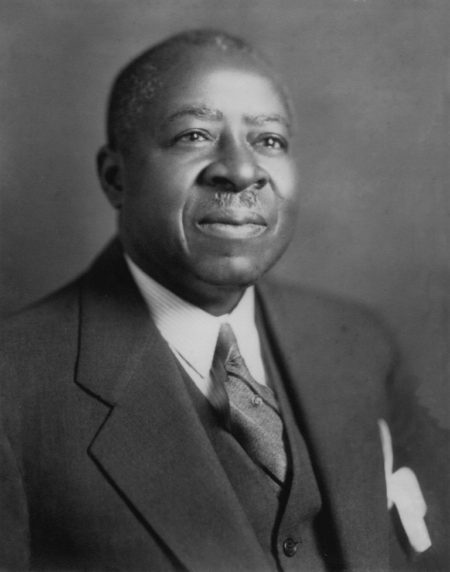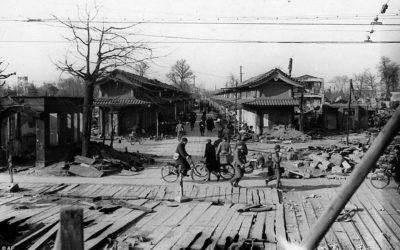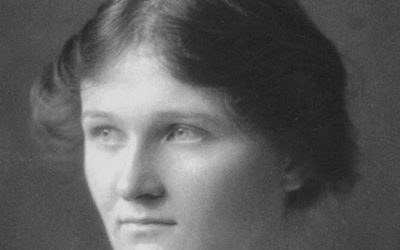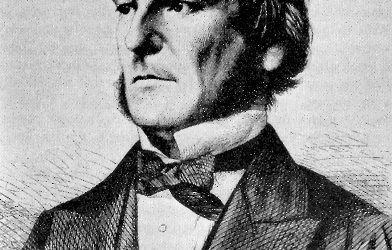When the historian Alexis de Tocqueville visited the young United States in the 1830s, one of the facets of American life that left the deepest impression on him was the variety and intensity of opinions held by citizens from every walk of life, expressed both in conversation and in print. “In America”, he later wrote, “there is scarcely a hamlet which has not its own newspaper”. Tocqueville also observed that Americans were very proud of their freedom to print whatever they believed to be the truth, regardless of the disapproval of those in power. He concluded that, as in other aspects of American life, the attitudes of its citizens toward their “free press” sprang from a firm attachment to democratic principles.
Many papers have names that evoke this democratic spirit, such as the popular “Tribune”, a reference to the officials in ancient Rome whose role was to protect the common people against governmental abuses. The Chicago Tribune was one of the first American newspapers to give itself this aspirational name, back in the 1840s when the greatest and most controversial issue dividing the nation was slavery. Half a century later Chicago would witness the rise of a second national newspaper dedicated to the cause of civil rights for African-Americans, although this one dispensed with classical allusions and cut straight to the point; it was called the Chicago Defender, and its founder was the chronically poor but relentlessly active Robert Sengstacke Abbott.
Robert Abbott was born in Saint Simons, an island off the coast of Georgia, on November 24, 1868. His father, Thomas Abbott, died of tuberculosis less than a year later, leaving him in the care of his mother Flora. Abbott’s relatives, who disliked Flora, sued for custody of the child, but with the help of a recent German immigrant, John Sengstacke, she won the suit. Five years later the two married, and as Robert’s stepfather Sengstacke would strongly influence the boy’s development.
John Sengstacke was a mixed-race child himself. His parents were a slave woman and a German ship captain who had purchased her freedom. As an adult John worked as a Congregationalist minister and a schoolteacher, and later in life would publish a small journal called the Woodville Times. Abbott admired his stepfather’s intellectual accomplishments, and among many odd jobs he performed as a boy one of his favorites was a stint as a “printer’s devil” for a local newspaper. Although he would try many different lines of work in his career, the press and its possibilities were never far from his mind.
However, it would be a long time before Abbott found a niche for himself. He studied printing at the Hampton Institute, graduating in 1896, and later worked part-time as a schoolteacher, but even into his late 20s he still had not settled into a career. Disillusioned by his lack of success, he traveled to Chicago and studied at the Kent College of Law hoping to become a lawyer. He managed to earn a Bachelor of Law degree, but unfortunately there was an obstacle in his way, one which most people today would rightly dismiss but which in his own time was insurmountable: his appearance.
Abbott had been discriminated against for his dark skin, even by other black children, for most of his life. Unlike fairer-skinned people, who were generally perceived as smarter and better, and who could sometimes even “pass” as white, he showed unmistakable signs of his Gullah racial heritage. Abbott had been the only black student in his class at Kent, and when he graduated only five black lawyers had ever been admitted to the Illinois bar. One of these men, the fair-skinned Edward H. Morris, personally warned him that the prejudices of his neighbors would make a career in law practically impossible. In the end, Abbott gave up his dreams of a legal career and returned to his first calling: the press.
Abbott worked at several low-ranking printing jobs over the next several years, but his goal was always to publish his own newspaper. Finally, in 1905, he used his meager savings to start the Chicago Defender. Chicago at this time already had several well-established newspapers aimed at a black audience, and this amateur upstart had seemingly little chance of displacing them. But Abbott was a tireless promoter, travelling across the city to hawk his four-page paper and hear the latest news for his next edition. For seven years he personally folded and distributed issues of the Defender, until finally in 1912 it established a presence on Chicago’s newsstands.
The principal appeal of the Defender was its fiery, sensationalist editorial stance. Abbott reported on the afflictions of the black community with indignant outrage, denouncing lynchings in the South, the concentration of vice in black neighborhoods in the North, and the persistence of ugly race prejudice everywhere. Thanks to the assistance of Pullman porters working on trains across the nation, the Defender soon outgrew Chicago and reached a nationwide readership eager to hear what was going on in the rest of America. Like the “grapevine telegraph” that spread messages through the antebellum South, the Defender became an institution in black households hundreds of miles away from its hometown.
Abbott’s most cherished cause was the “Great Migration” which brought black workers and families out of the southern states and into the large industrial cities of the North. Although he admired Booker T. Washington and his ethic of black self-improvement, Abbott differed from Washington in his opinion of where opportunities for that self-improvement existed. Through the Defender, he shared stories of struggling black families who had found success in Chicago and other northern cities, advice on how to migrate and establish oneself in a new city, and editorials urging his readers to take a stand against social and economic discrimination. He was so successful in promoting migration that many southern towns censored and banned the Defender, hoping to keep black residents from moving. Great as its financial success was, the paper’s true success was its ability to stir the hearts and minds of readers; at its peak circulation, historians estimate that every copy purchased was read by around four other people.
Like many successful entrepreneurs, later in life Abbott retired from his work to become a philanthropist. Extending his interest in black enfranchisement to children, in 1923 he founded the Bud Billiken Club, named after a popular mascot of the time who represented good luck. One of the first black youth organizations, the club was a focal point for his charitable interests and survived him as his principal legacy to the world. The club’s annual Bud Billiken Parade, which commemorates the return of children to school after summer vacation, remains one of the largest African American community events in the country. For Abbott, who constantly faced obstacles to his own education and success, this undoubtedly would have been a great source of pride.
Robert Sengstacke Abbott was a man who tracked down opportunity instead of waiting for it to arrive. His tireless energy transformed a tiny home-published newspaper into a cultural institution, and through the medium of his newspaper he communicated that energy to countless others throughout the United States. With stories of success, not the least of which was his own, he inspired the poor and disenfranchised to change their circumstances and make something of themselves. And through it all, he maintained that black and white citizens would have to learn to live together in a spirit of peace and mutual respect. He never lost track of the founding principle of the Chicago Defender: “American race prejudice must be destroyed”.
Next Post: Simon Benson, the farmhand who emerged from bankruptcy to become one of the great “timber barons” of the Pacific Northwest.














